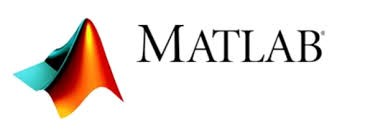New Features of HTML5
HTML stands for Hypertext Markup Language, and it is the standard markup language for creating web pages and web applications. HTML5 is the 5th version of HTML. With invent of features in HTML5, it’s not only possible to create better websites, but we can also create dynamic websites.
1)Intro of Audio and Video:
Audio and Video tags are the two major addition to HTML5. It allows developers to embed a video or audio on their website. HTML5 video can use CSS and CSS3 to style the video tag. You can change the border, opacity, reflections, gradients, transitions, transformations, and even animations. HTML5 makes adding video super-fast and without having to build a video player. This saves time for the developer and offers the client a superior and more affordable solution.
Output:
2) Vector Graphics:
This is a new addition to the revised version which has hugely impacted the use of Adobe Flash in websites. It can be used to draw graphics with various shapes and colors via scripting usually JS. Vector graphics are scalable, easy to create and edit. It also supports interactivity and animation. Having a smaller file size makes transferring and loading graphics much faster on the web. That’s the reason why many people prefer to use vector graphics.
Output:

3) Header and Footer
With these new tags, there is no longer a need to identify the two elements with a <div> tag. Footer is placed at the end of the web page while Header is placed at the start of the web page. By using <header> and <footer> HTML5 elements, the browser will know what to load first and what to load later.
The header can contain-
One or more heading elements (<h1> – <h6>)
Logo or icon
Authorship information
Footer can contain-
Authorship information
Copyright information
Contact information
Back to top links
They both have the same default CSS property as a display block.
Layout of HTML vs HTML5
Output:
Example: Below examples illustrate the <footer> Tag in HTML elements:
Output:
4) Figure and Figcaption:
HTML5 allows to use a <figure> element to mark up a photo in a document, and a <figcaption> element to define a caption for the photo. The <figcaption> tag defines a caption for a <figure> element. This tag provides a container for content that is equivalent to a figure. It can be used to group a caption with one or more images, a block of code, or other content.
Output:
FThe figure and figcaption element
5)Nav tag:
The <nav> tag defines a set of navigation links. It is used for the part of an internet site that links to different pages at the website. The hyperlinks can be organized through a number of approaches. Common examples of the nav elements are menus, tables, contents, and indexes. This element makes it much easier to create a navigation menu, creates a neat horizontal menu of text links, and helps screen reading software to correctly identify primary navigation areas in the document.
Output:
6)Progress tag:
The progress tag is used to check the progress of a task during the execution. Progress tag can be used with the conjunction of JavaScript.
Output:
7)Placeholder Attribute:
The placeholder attribute specifies a short hint that describes the expected value of an input field/text area. The short hint is displayed in the field before the user enters a value.
Output:
8)Email attribute:
When the input type in the form set as email, then the browser gets the instruction from the code to write a valid format email. The input email id is automatically validated to check the format of the email id is correct or not.
Output:
ghtgh
9)Storage:
In the case of HTML, we can use the browser as the temporary storage whereas, in the case of HTML5, application cache, web SQL database, and web storage is used.
10)Ease of use:
While HTML5 does have risks like constant updates, it is generally easy to keep up with the changes & updates because of simpler syntax as compared to other versions of HTML.




Comments
Post a Comment